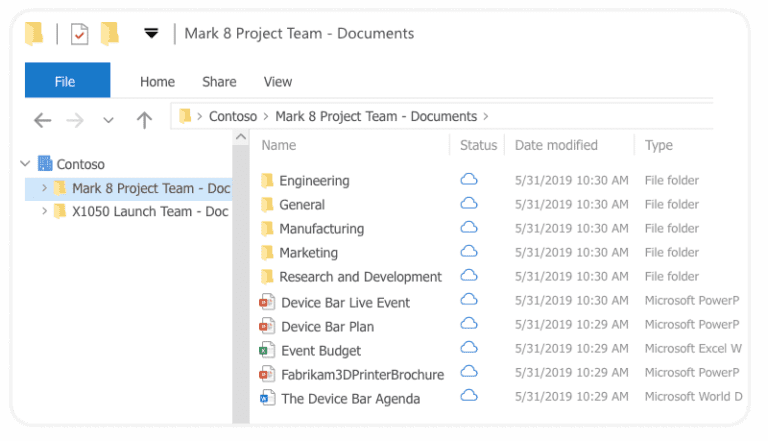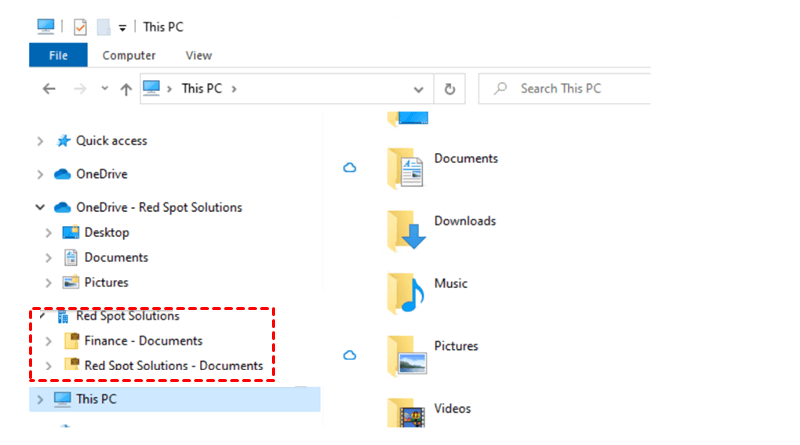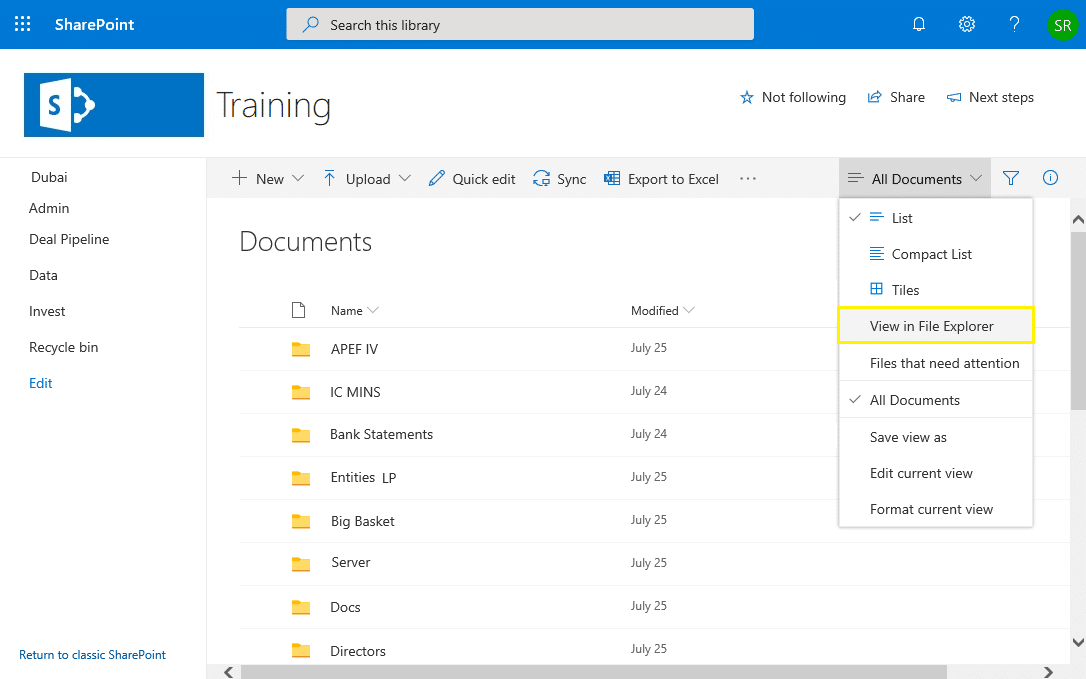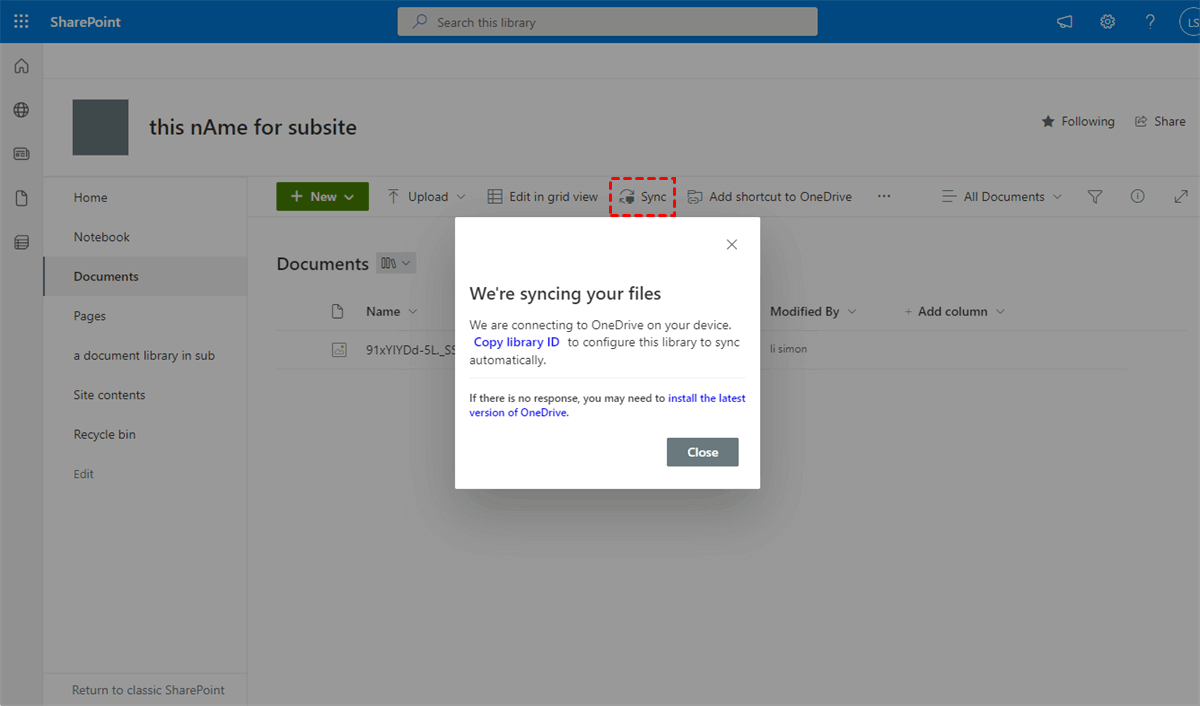Unleash SharePoint's Power: Access from File Explorer

In today's digital workplace, seamless integration and accessibility are key to maximizing productivity. For organizations utilizing Microsoft 365, SharePoint stands as a powerhouse, offering a versatile and secure platform for content management and collaboration. One of its most powerful yet often overlooked features is the ability to access SharePoint directly from the familiar interface of File Explorer. This integration streamlines workflows, making it effortless for users to work with SharePoint documents as if they were stored locally, without the need for complex file navigation or switching between applications.
Unlocking the Potential: A Game-Changing Feature

SharePoint’s integration with File Explorer is a game-changer, offering a seamless bridge between the cloud and the user’s desktop. By leveraging this feature, organizations can harness the full potential of SharePoint, providing employees with a familiar and intuitive way to access, edit, and collaborate on files, regardless of their physical location.
This integration simplifies the user experience, reducing the learning curve associated with cloud-based platforms. It empowers users to work with SharePoint files just as they would with any local file, making the transition to cloud-based collaboration a smooth and natural process. As a result, productivity soars, and the efficiency of content management and sharing is revolutionized.
The Benefits of Seamless Integration
SharePoint’s integration with File Explorer offers a host of advantages that transform the way teams work and collaborate. Here’s a closer look at some of the key benefits:
- Familiar User Interface: Users can access SharePoint files through the well-known File Explorer interface, eliminating the need to learn new navigation systems.
- Effortless Collaboration: Real-time collaboration becomes seamless, with multiple users able to work on the same file simultaneously, regardless of their physical locations.
- Enhanced Productivity: By eliminating the friction of switching between applications, employees can focus on their tasks, leading to increased efficiency and faster project completion.
- Secure Data Access: SharePoint's robust security features ensure that sensitive data remains protected, even when accessed through File Explorer.
- Version Control and History: Users can easily manage and track file versions, ensuring that the latest updates are always available and accessible.
| Feature | Description |
|---|---|
| Real-time Collaboration | Multiple users can edit and collaborate on files simultaneously, with changes instantly reflected for all collaborators. |
| Version Control | SharePoint automatically tracks and manages file versions, allowing users to revert to previous versions if needed. |
| Security Features | SharePoint offers robust security options, including access controls, encryption, and data loss prevention, ensuring that sensitive information remains protected. |

The Technical Setup: Enabling Access from File Explorer

To enable SharePoint access from File Explorer, organizations need to follow a few technical steps. While the process may vary slightly depending on the specific version of Microsoft 365 and SharePoint being used, the general procedure remains consistent. Here’s a step-by-step guide to get started:
- Ensure Microsoft 365 and SharePoint Compatibility: Verify that your Microsoft 365 subscription includes SharePoint and that both applications are up-to-date.
- Enable SharePoint Integration: In the SharePoint admin center, navigate to the "Settings" section and locate the "File Explorer Integration" option. Ensure that this feature is enabled.
- Configure Network Settings: Check your network settings to ensure that SharePoint can be accessed through File Explorer. This may involve configuring proxy settings or adjusting firewall rules.
- Map SharePoint Sites to File Explorer: In File Explorer, right-click on the "Network" section and select "Map network drive." Enter the URL of your SharePoint site and choose a drive letter for easy access.
- Test and Verify Access: Open File Explorer and navigate to the mapped drive. You should now be able to access SharePoint files and folders just like any other local storage.
Best Practices for Optimal Performance
To ensure the best possible experience when accessing SharePoint from File Explorer, consider the following best practices:
- Optimize Network Connection: Ensure a stable and fast network connection to minimize latency and improve file transfer speeds.
- Regularly Update Software: Keep Microsoft 365 and SharePoint up-to-date to benefit from the latest features and security patches.
- Manage User Access: Utilize SharePoint's access controls to ensure that only authorized users can access and edit files, maintaining data security.
- Backup and Recovery: Implement regular backup strategies to protect against data loss and ensure smooth recovery in case of unforeseen issues.
Real-World Success Stories: Empowering Teams with SharePoint
SharePoint’s integration with File Explorer has proven to be a game-changer for numerous organizations across various industries. Here are a few success stories that showcase the power of this feature in action:
Case Study: ABC Manufacturing
ABC Manufacturing, a leading manufacturer of automotive parts, faced challenges in managing and sharing design files across its global teams. By integrating SharePoint with File Explorer, they streamlined their collaboration processes. Engineers and designers could access and work on the latest product designs simultaneously, regardless of their physical locations. This led to faster design iterations, improved communication, and ultimately, enhanced productivity.
Case Study: XYZ Healthcare
XYZ Healthcare, a prominent healthcare provider, sought to improve patient record management and collaboration among its medical teams. With SharePoint and File Explorer integration, they created a centralized repository for patient records, ensuring that all relevant information was easily accessible. Medical professionals could quickly access and update patient files, leading to more efficient and effective patient care.
Case Study: 123 Consulting
123 Consulting, a global management consulting firm, needed a secure and collaborative platform for project management. By leveraging SharePoint’s File Explorer integration, they established a centralized workspace for each project. Consultants could easily access and share project-related documents, track versions, and collaborate in real-time. This streamlined approach to project management enhanced their productivity and client satisfaction.
Future Prospects: Expanding the Horizons of Collaboration
As technology continues to evolve, SharePoint’s integration with File Explorer is poised to play an even more pivotal role in the digital workplace. With ongoing advancements in cloud computing and collaboration tools, we can expect further enhancements to this powerful feature.
Predicted Future Developments
Looking ahead, here are some potential future developments that could further enhance SharePoint’s integration with File Explorer:
- Enhanced Security Features: As cybersecurity threats evolve, we can anticipate more robust security measures, such as advanced encryption and authentication protocols, to protect sensitive data.
- AI-Powered Collaboration: Artificial intelligence could be leveraged to automate certain collaboration processes, such as intelligent file suggestions or automated version control.
- Seamless Mobile Integration: With the growing importance of mobile devices in the workplace, we may see improvements in SharePoint's mobile app, enabling users to access and collaborate on files from their smartphones or tablets.
- Enhanced Analytics and Reporting: Future iterations may include more sophisticated analytics tools, providing organizations with deeper insights into collaboration patterns and user behavior.
Conclusion: Unleashing SharePoint’s Full Potential
SharePoint’s integration with File Explorer is a powerful tool that unlocks the full potential of Microsoft’s content management and collaboration platform. By providing a seamless bridge between the cloud and the user’s desktop, organizations can revolutionize their workflows, enhance productivity, and foster a more collaborative work environment.
As we look to the future, SharePoint's continued evolution promises even more exciting developments, ensuring that organizations can stay ahead of the curve and adapt to the ever-changing digital landscape. With the right strategies and tools in place, the possibilities for collaboration and innovation are limitless.
How do I enable SharePoint access from File Explorer?
+To enable SharePoint access from File Explorer, follow these steps: Navigate to the SharePoint admin center, locate the “File Explorer Integration” setting, and ensure it’s enabled. Configure your network settings to allow access, and then map SharePoint sites to File Explorer for easy access.
What are the benefits of integrating SharePoint with File Explorer?
+Integrating SharePoint with File Explorer offers several benefits, including a familiar user interface, seamless collaboration, enhanced productivity, and secure data access. It simplifies file management and sharing, making it easier for teams to work together efficiently.
Is SharePoint’s File Explorer integration secure?
+Yes, SharePoint’s File Explorer integration is designed with security in mind. It utilizes robust security features, such as access controls, encryption, and data loss prevention, to ensure that sensitive information remains protected.
Can I access SharePoint files offline with File Explorer integration?
+Yes, with File Explorer integration, you can access SharePoint files offline. SharePoint provides an option to sync files to your local device, allowing you to work on them even when you’re not connected to the internet. Changes will be synchronized when you reconnect.



